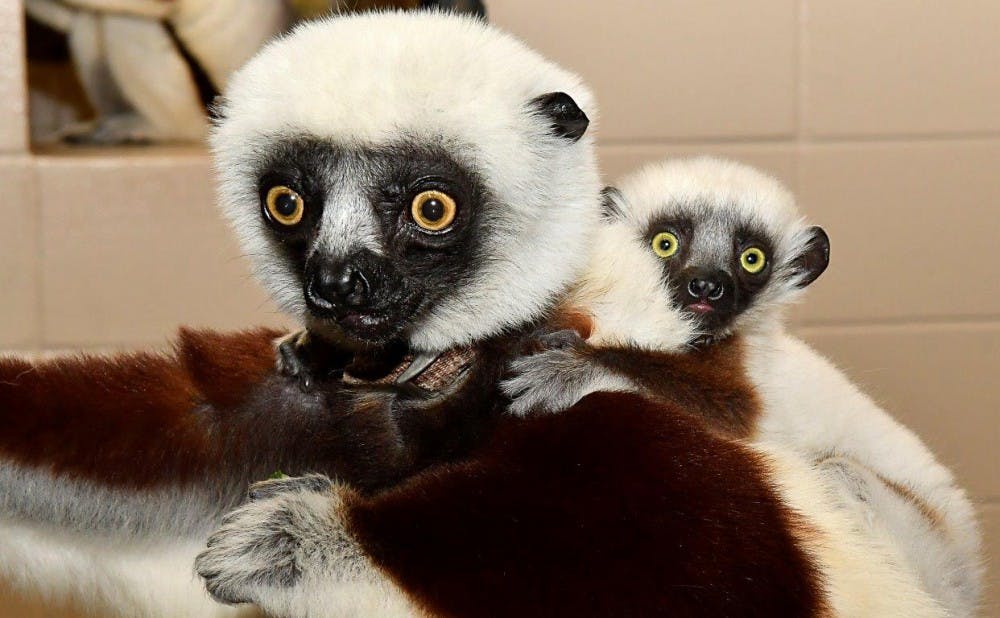Need another reason to prove Duke is better than UNC? We have a new baby lemur.
The Duke Lemur Center announced Thursday that the Dec. 23 birth of Elagabalus had kicked off this year’s birthing season. Known as “Gabe” for short, the new baby is a Coquerel’s sifaka, a species of leaf-eating lemur from the dry northwestern forests of Madagascar.
Why the two-month wait for announcing his birth? Gabe’s a bit camera shy.
“He was very good at hiding on mom,” said Sara Clark, director of communications at the Lemur Center. “Every time a photographer tried to get a good shot, all you could see was a little fuzzy nugget.”
Gabe is one of 33 Coquerel’s sifakas currently living at the Lemur Center, which is one of the only places in North America capable of housing this species. Duke is also responsible for an additional 35 Coquerel’s sifakas in sites across the United States.
These animals are known for their distinctive way of moving—they hop on their back feet and can leap up to 30 feet horizontally.
“They’re these very athletic, stunning creatives,” Clark said. “It’s really fun to see them in the forest.”
She explained that the primary technician at the Lemur Center who cares for new babies—and had the privilege of deciding the name—thought that the baby lemur looked like a “Gabe.”
Since all the lemurs in his family are named for Roman nobility and have to stay in theme, the technician decided on “Elagabalus,” but “Gabe” for short. Other names in the family include Drusilla and Julien.
Gabe is the first infant born to his father Pontius, who is five years old. His mom Pia was previously the mate of Jovian—known for his role as Zoboomafoo on the popular PBS show—with whom she had nine infants.
When Gabe was first born, his mom separated herself from the rest of the group, but now the family is living together, Clark explained. Infant survival rates are higher when the mom and baby live apart from the group for a while.
“It keeps the infant safer because the other adults are really interested in the baby when it’s first born,” she said. “It also gives the mom and baby some bonding time.”
Although he’s still very dependent on his mom, Gabe has started to do independent forays into the rest of the enclosure and can eat solid food.
Gabe is currently the only baby at the Lemur Center, but many more will soon join him, Clark noted. The birthing seasons for each species vary, with the season for Coquerel’s sifakas beginning in December and lasting until February. The births will continue throughout the spring and summer, ending with dwarf and mouse lemurs in the early fall.
“We’re just excited that birth season is here,” Clark said. “We’re on baby watch for some other lemurs.”
Get The Chronicle straight to your inbox
Signup for our weekly newsletter. Cancel at any time.

